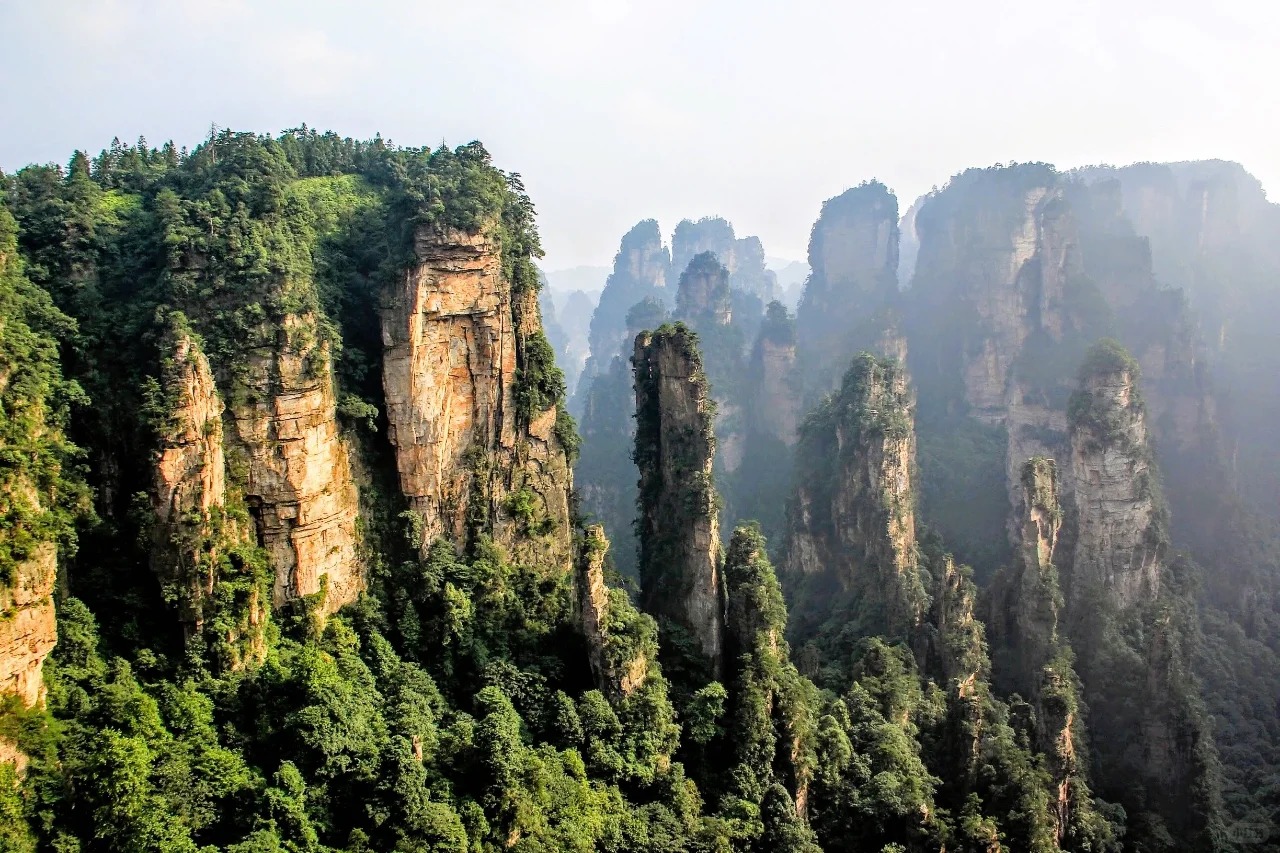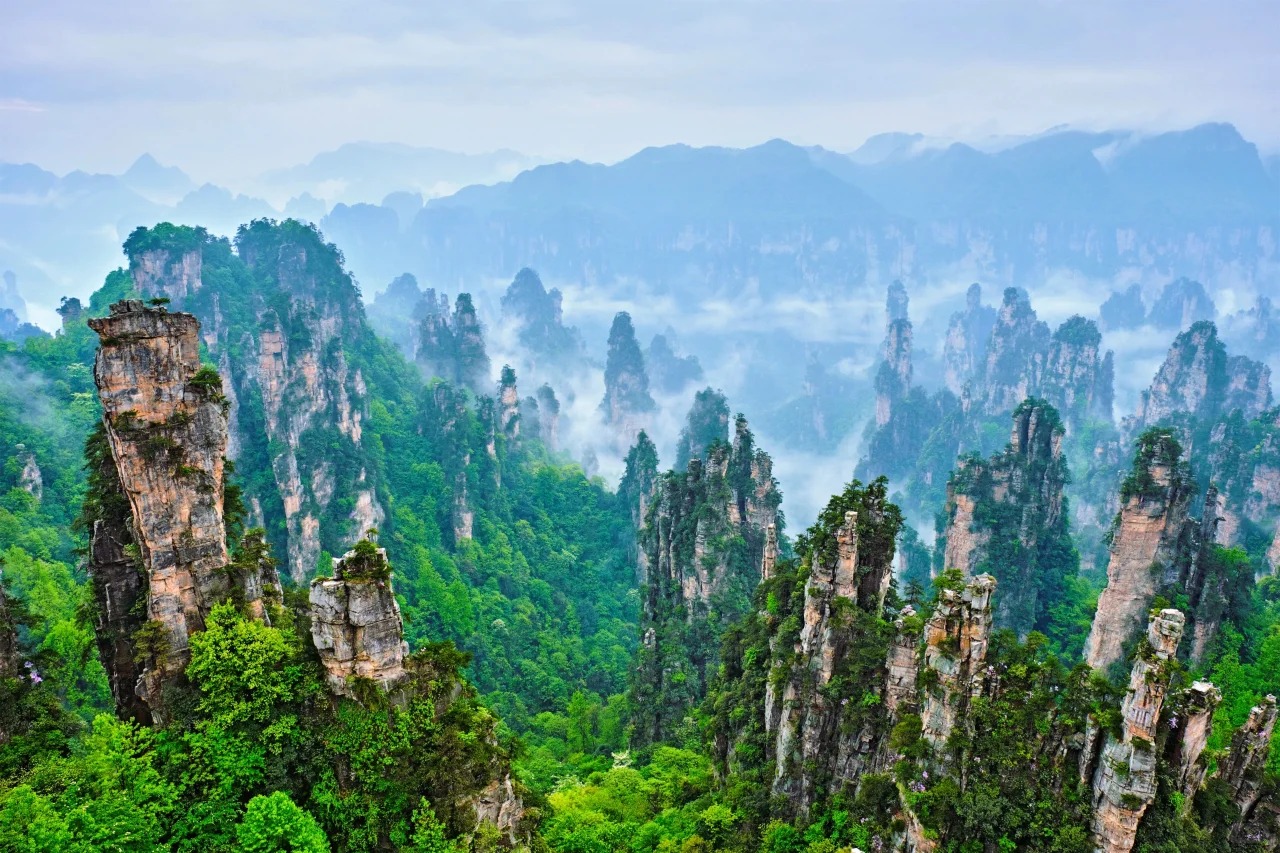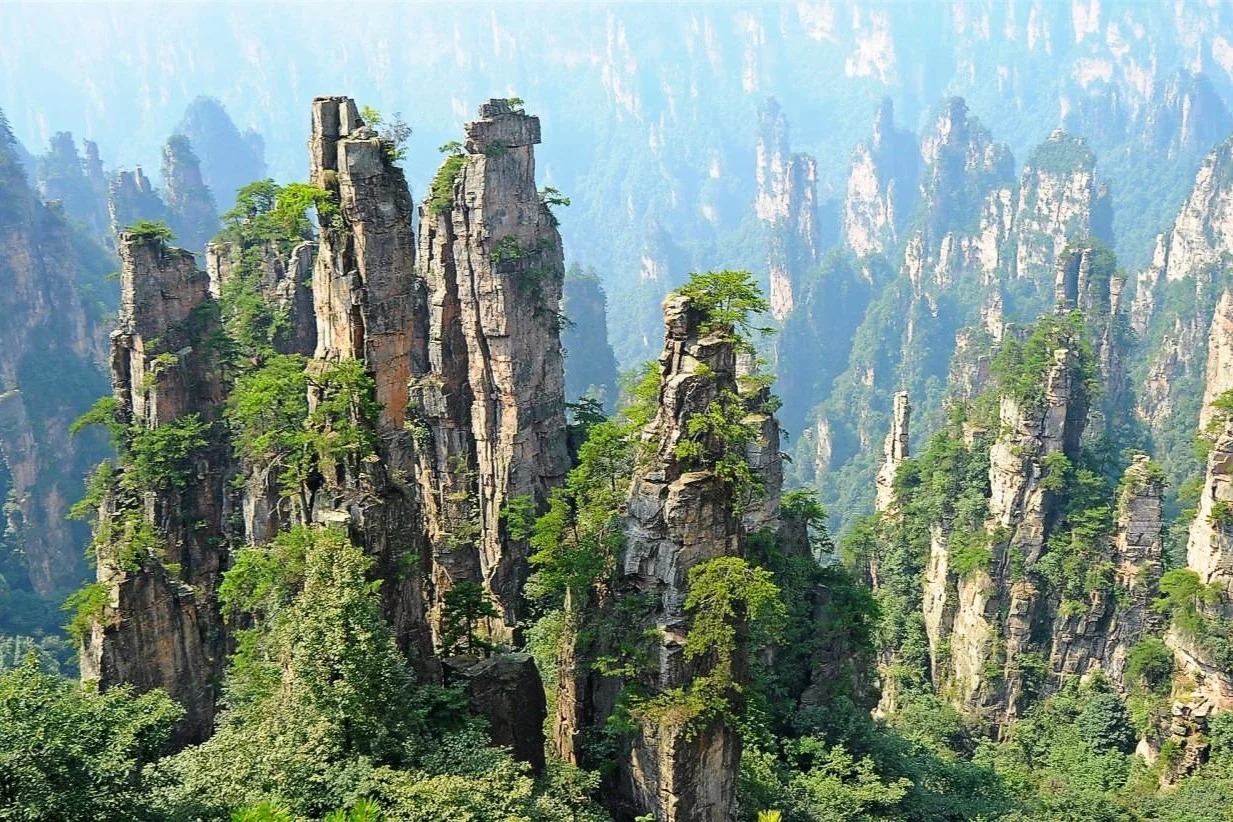Introduction to Zhangjiajie National Forest Park
Nestled in the northwestern corner of Hunan Province, Zhangjiajie National Forest Park stands as a testament to nature’s artistry. Established in 1982 as China’s first national forest park and later recognized as a UNESCO World Heritage Site in 1992, this geological wonderland has captivated visitors from around the globe.
The park’s otherworldly landscape, characterized by towering sandstone pillars shrouded in mist, served as inspiration for the floating mountains of Pandora in James Cameron’s blockbuster film “Avatar”. This connection catapulted Zhangjiajie to international fame, drawing millions of visitors annually to witness its surreal beauty firsthand.
Spanning over 11,900 acres, Zhangjiajie offers a mesmerizing blend of natural wonders, rich biodiversity, and cultural heritage, making it a must-visit destination for nature enthusiasts and adventure seekers alike.

Geological Marvels and Landscape
The awe-inspiring landscape of Zhangjiajie is the result of millions of years of geological processes. The distinct quartzite sandstone pillars, some reaching heights of over 1,000 meters, were formed through a combination of tectonic uplift, water erosion, and weathering.
Notable formations include:
- Southern Sky Column: Renamed “Avatar Hallelujah Mountain” in 2010, standing at an impressive 1,074 meters.
- First Bridge under Heaven: A natural stone arch connecting two peaks, offering breathtaking views.
- Five Fingers Peak: A collection of five pillar-like peaks resembling a hand reaching towards the sky.
The park’s ecosystem is a biodiversity hotspot, home to over 3,000 plant species and numerous rare animals, including the Chinese giant salamander and the clouded leopard.

Key Attractions Within the Park
| Attraction | Highlights | Best For |
|---|---|---|
| Yuanjiajie Scenic Area | Avatar Hallelujah Mountain, Bailong Elevator | Panoramic views, movie fans |
| Tianzi Mountain Nature Reserve | Sea of clouds, unique rock formations | Photography, cable car rides |
| Golden Whip Stream | Scenic hike, diverse flora and fauna | Nature lovers, easy walking |
| Ten-Mile Gallery | Natural rock art, mini-train ride | Leisurely sightseeing |
Each area offers unique perspectives on the park’s stunning geology and natural beauty. Visitors can spend days exploring these diverse landscapes, from misty mountain tops to serene streams and dense forests.
Transportation and Accessibility
Navigating Zhangjiajie is an adventure in itself:
- Cable Cars: Several lines offer panoramic views without physical exertion.
- Bailong Elevator: The world’s highest outdoor lift, providing quick access to Yuanjiajie.
- Internal Bus System: Efficient shuttles connect major attractions.
- Hiking Trails: Range from easy walks to challenging treks for all fitness levels.
For efficient exploration, consider purchasing a multi-day pass and plan your route in advance, utilizing a mix of transportation options.
Flora, Fauna, and Natural Wonders
Zhangjiajie’s diverse ecosystem supports:
- Over 3,000 plant species, including rare orchids and ancient ginkgo trees.
- 149 vertebrate species, with several endangered animals like the Chinese water deer.
The park’s beauty transforms with the seasons:
- Spring brings vibrant blossoms and lush greenery.
- Summer offers misty landscapes and dramatic thunderstorms.
- Autumn paints the forests in golden hues.
- Winter occasionally dusts the peaks with snow, creating a magical scene.
The interplay of mist and sunlight among the pillars creates ever-changing vistas, offering photographers endless opportunities for capturing stunning images.

Cultural Elements and Local Communities
Zhangjiajie is not just a natural wonder but also a cultural treasure:
- The Tujia and Miao ethnic minorities have called this region home for centuries.
- Traditional villages within and around the park offer insights into local lifestyles.
- Cultural performances showcase traditional music, dance, and crafts.
- Local cuisine features specialties like Sanxiaguo (smoked pork in bamboo) and Xianxi Dougao (rice cakes).
Visitors can immerse themselves in these rich cultural experiences, adding depth to their natural exploration of the park.
Practical Visitor Information
Best times to visit:
- April to October for comfortable temperatures and lush scenery.
- September to November for clearer views and fewer crowds.
Entrance fees:
- A multi-day pass (valid for 4 days) is recommended for thorough exploration.
- Additional fees apply for certain attractions and transportation within the park.
Accommodation options range from luxury hotels near park entrances to budget-friendly hostels in nearby towns.
Photography tips:
- Bring a wide-angle lens to capture the scale of the landscape.
- Visit viewpoints during early morning or late afternoon for the best light.
- Be patient and wait for mist to clear or settle for dramatic effects.

Conservation Efforts and Responsible Tourism
Zhangjiajie faces the challenge of balancing tourism with environmental preservation. Efforts include:
- Strict regulations on construction and development within the park.
- Reforestation projects and wildlife protection programs.
- Promotion of eco-friendly transportation options.
Visitors can contribute by:
- Staying on designated paths to prevent erosion.
- Properly disposing of waste and using refillable water bottles.
- Supporting local eco-friendly businesses and guides.
By practicing responsible tourism, visitors ensure that Zhangjiajie’s natural wonders remain pristine for future generations.
Zhangjiajie National Forest Park offers a truly unique experience, blending surreal landscapes with rich biodiversity and cultural heritage. Whether seeking adventure, natural beauty, or simply a place to marvel at Earth’s wonders, Zhangjiajie promises an unforgettable journey into one of China’s most spectacular natural treasures.






